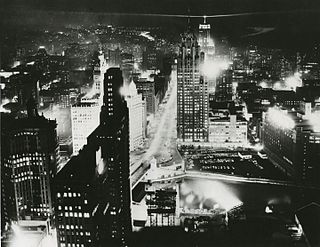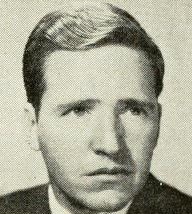| |||||||||||||||||
| |||||||||||||||||
| |||||||||||||||||
| Elections in North Carolina |
|---|
 |
The 1952 North Carolina lieutenant gubernatorial election was held on November 4, 1952. Democratic nominee Luther H. Hodges defeated Republican nominee Warren H. Pritchard with 67.67% of the vote.
| |||||||||||||||||
| |||||||||||||||||
| |||||||||||||||||
| Elections in North Carolina |
|---|
 |
The 1952 North Carolina lieutenant gubernatorial election was held on November 4, 1952. Democratic nominee Luther H. Hodges defeated Republican nominee Warren H. Pritchard with 67.67% of the vote.
Primary elections were held on May 31, 1952. [1]
| Party | Candidate | Votes | % | |
|---|---|---|---|---|
| Democratic | Luther H. Hodges | 227,167 | 47.41 | |
| Democratic | Roy H. Rowe | 151,077 | 31.53 | |
| Democratic | Benjamin J. McDonald | 52,916 | 11.05 | |
| Democratic | Marshall C. Kurfees | 47,955 | 10.01 | |
| Total votes | 479,115 | 100.00 | ||
| Party | Candidate | Votes | % | |
|---|---|---|---|---|
| Republican | Warren H. Pritchard | 13,463 | 82.79 | |
| Republican | William G. Lehew | 2,798 | 17.21 | |
| Total votes | 16,261 | 100.00 | ||
| Party | Candidate | Votes | % | ±% | |
|---|---|---|---|---|---|
| Democratic | Luther H. Hodges | 783,792 | 67.67% | ||
| Republican | Warren H. Pritchard | 374,530 | 32.33% | ||
| Majority | 409,262 | ||||
| Turnout | |||||
| Democratic hold | Swing | ||||

The 1956 United States Senate elections were elections for the United States Senate that coincided with the re-election of President Dwight D. Eisenhower. Although Democrats gained two seats in regular elections, the Republicans gained two seats in special elections, leaving the party balance of the chamber unchanged.

The 1954 United States Senate elections was a midterm election in the first term of Dwight D. Eisenhower's presidency. Eisenhower's Republican party lost a net of two seats to the Democratic opposition. This small change was just enough to give Democrats control of the chamber with the support of an Independent who caucused with them.

The 1956 Democratic National Convention nominated former Governor Adlai Stevenson of Illinois for president and Senator Estes Kefauver of Tennessee for vice president. It was held in the International Amphitheatre on the South Side of Chicago, Illinois August 13–August 17, 1956. Unsuccessful candidates for the presidential nomination included Governor W. Averell Harriman of New York, Senator Lyndon B. Johnson of Texas, and Senator Stuart Symington of Missouri.

The 1998 South Carolina gubernatorial election was held on November 3, 1998 to select the governor of the state of South Carolina. Jim Hodges, the Democratic nominee, handily defeated Republican Governor David Beasley to become the 114th governor of South Carolina. Beasley was the first incumbent governor to be defeated for reelection since Daniel Henry Chamberlain in the disputed election of 1876. As of 2022, this was the last time a Democrat was elected Governor of South Carolina.

The South Carolina presidential primary is an open primary election which has become one of several key early-state presidential primaries in the process of the Democratic and Republican Parties choosing their respective general election nominees for President of the United States. South Carolina has cemented its place as the "First in the South" primary for both parties.

The North Carolina United States Senate election of 1978 was held on November 7, 1978 as part of the nationwide elections to the Senate. The general election was between the Republican incumbent Jesse Helms and the Democratic nominee John Ingram. Helms won re-election, by a slightly wider margin than in 1972.

The 1972 United States presidential election in North Carolina took place on November 7, 1972, as part of the 1972 United States presidential election. Voters chose 13 representatives, or electors to the Electoral College, who voted for president and vice president.

The 1956 North Carolina gubernatorial election was held on November 6, 1956. Incumbent Democrat Luther H. Hodges defeated Republican nominee Kyle Hayes with 66.95% of the vote.

The 1952 North Carolina gubernatorial election was held on November 4, 1952. Democratic nominee William B. Umstead defeated Republican nominee Herbert F. "Chub" Seawell Jr. with 67.50% of the vote.

The 1948 North Carolina gubernatorial election was held on November 2, 1948. Democratic nominee W. Kerr Scott defeated Republican nominee George M. Pritchard with 73.16% of the vote.

Elections were held in Illinois on Tuesday, November 6, 1956.

The 1940 North Carolina gubernatorial election was held on November 5, 1940. Democratic nominee J. Melville Broughton defeated Republican nominee Robert H. McNeill with 75.70% of the vote.

The 1912 North Carolina gubernatorial election was held on November 5, 1912. Democratic nominee Locke Craig defeated Progressive nominee Iredell Meares with 61.35% of the vote.

The 1914 Kansas gubernatorial election was held on November 3, 1914. Republican nominee Arthur Capper defeated Democratic incumbent George H. Hodges with 39.67% of the vote.

The 1896 North Carolina gubernatorial election was held on November 3, 1896. Republican nominee Daniel Lindsay Russell defeated Democratic nominee Cyrus B. Watson with 46.52% of the vote. This was the only election in North Carolina between 1872 and 1972 in which the Republican nominee won the governor's office.

The 1888 North Carolina gubernatorial election was held on November 6, 1888. Democratic nominee Daniel Gould Fowle defeated Republican nominee Oliver H. Dockery with 51.97% of the vote.

The 1988 North Carolina lieutenant gubernatorial election was held on November 8, 1988. Republican nominee Jim Gardner defeated Democratic nominee Tony Rand with 50.64% of the vote.
The 1984 North Carolina lieutenant gubernatorial election was held on November 6, 1984. Democratic nominee Robert B. Jordan defeated Republican nominee John H. Carrington with 53.70% of the vote.

The 1968 North Carolina lieutenant gubernatorial election was held on November 5, 1968. Democratic nominee Hoyt Patrick Taylor Jr. defeated Republican nominee Don H. Garren with 55.36% of the vote.

The 1956 North Carolina lieutenant gubernatorial election was held on November 8, 1956. Democratic nominee Luther E. Barnhardt defeated Republican nominee Joseph A. Dunn with 66.71% of the vote.